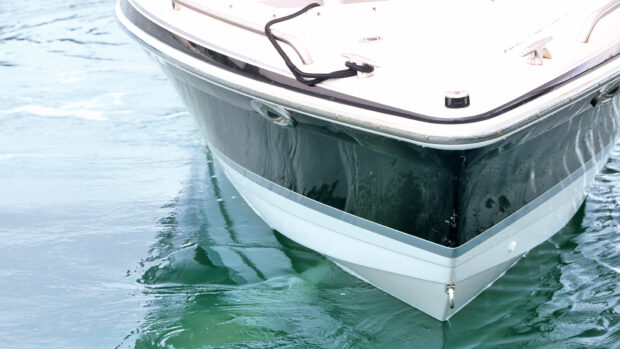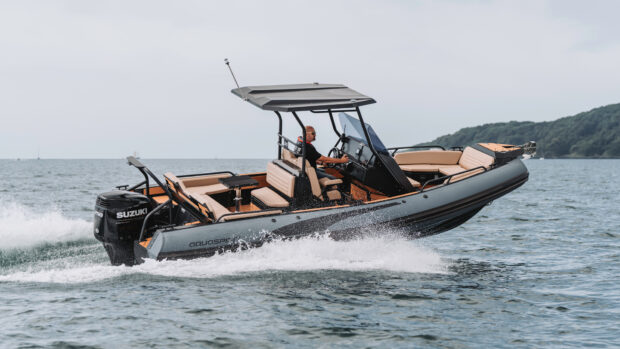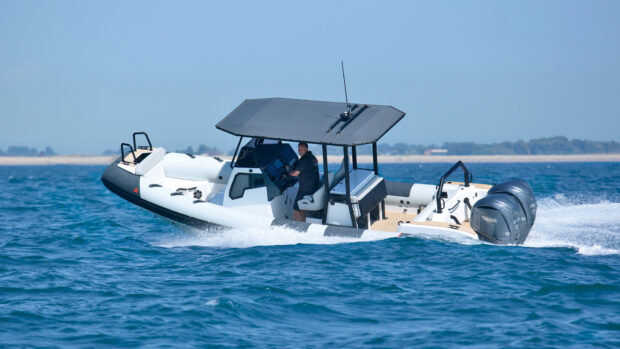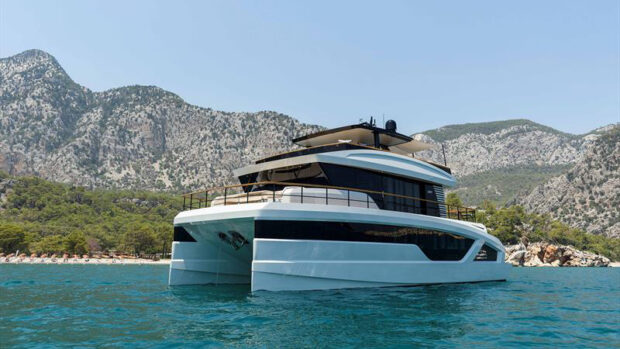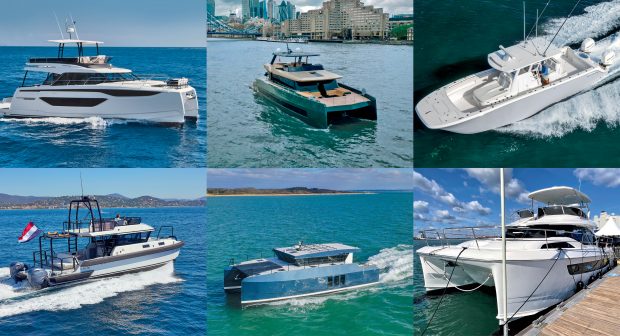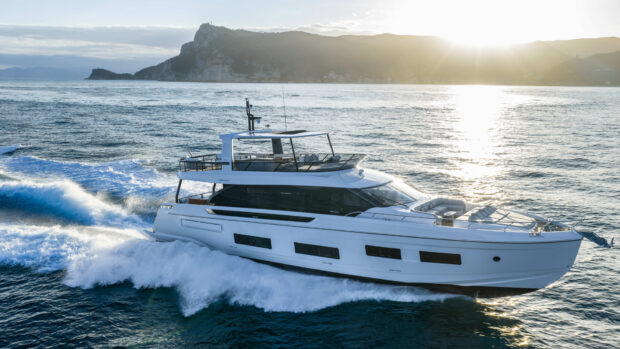Alex Smith spends the night onboard the Greenline 45 Fly Hybrid, Greenline's latest generation hybrid cruiser…
Here at MBY, we spend a lot of time on boats. But while the average press trip tends to involve an intensive spell at sea followed by an Uber back to the airport, this is one of those rare occasions when we get the chance to spend the night on board the Greenline 45 Fly Hybrid.
Thanks to the guys at Argo Yachting in Mallorca, the plan is to jump on board the new Greenline 45 Fly Hybrid and go for a cruise, before finding a quiet anchorage to spend the night away from shore power. We can then run all the systems we require for an evening of entertainment and a comfortable night’s sleep before heading off again the next day.
In other words, our job is to use the boat exactly as a keen cruiser might and see how Greenline’s 6th-generation hybrid system copes.
The hybrid concept
While the standard Greenline 45 Fly uses a pair of Yanmar diesel engines hooked up to V Drives, this hybrid model positions a small 25kW eMotor on each shaft between the diesel engine and the gearbox.
That’s powered by a remarkably compact row of lithium-polymer battery boxes, each with 11.1kWh of capacity. Three is standard but the test boat has four and there is the option for six (as well as plenty of space for eight) so 66, or potentially even 88kWh, looks like a very real possibility.

The eMotors slot onto the shafts between the diesel engines and the gearboxes before the V-drive heads back aft
The use of the eMotors does of course lengthen the upper shaft, so the diesel engines have to be shifted back a touch, beneath the moulding for the aft storage compartment. But that’s not a problem because a handy lift-out tray in the base of the toys locker gives you quick and easy access whenever you need it.
Now, as you would expect, the battery bank caters both for your hotel loads and for spinning your props when in electric mode. But in terms of topping these battery banks up, that’s not achieved by dedicated generators and, in spite of Greenline’s solar power heritage, it’s not achieved by means of the sun either.
On the contrary, as a flybridge (rather than a coupé), there’s only space for a couple of panels on the roof ahead of the flybridge wind deflector. In principle, you could add a hard top to the flybridge, quadrupling your solar generation potential but if you do so, you would also have to spend extra money (and use extra energy) on a gyro to compensate for the extra weight and windage.
In short then, when the battery banks run down, they are topped up simply by running the diesel engines – and for the average cruiser, that represents no hardship at all.

Crawling along at 3 knots in electric mode sees sound readings of just 46Db(A)
Pre-dinner cruise
Setting off is certainly a pleasant experience. The walkaround decks, the skipper’s side door, the side gate and the steep windows make everything very simple to manage. And the automatic default to electric mode is also a treat.
As we ease out of the marina at 2-3 knots, we’re seeing sound readings of about 46Db(A), which is as close to noise-free as you’re likely to experience. The data display is also very useful. It tells us the amount of energy we’re using at any given time, as well as the time to empty, so you can extrapolate your range.
Article continue below…

Two formidable brands join forces to create the most advanced hybrid motor yacht

The boat even drug-runners are scared of: Marell M17 hybrid yacht tour
But in practice, that range isn’t huge (from 5 to 25 miles) in electric mode because range extension is not the purpose of the hybrid package. And with a top end of about 6.5 knots, it’s not about speed either.
It’s about providing you with the capacity to operate without noise, vibration or fumes in marinas or bays, where you want a more serene and light-footed approach, both for your own benefit and for the benefit of those around you – and as this boat is already illustrating, that is very easily achieved.

The Yanmar 370s will recharge your battery banks in about 90 minutes
That said, the rate of update on the screen is distinctly slow – so much so that having waited in excess of two minutes for the “time to empty” calculation to catch up with the new revs and speed, we simply give up and move on with our lives.
That’s not critical though because, having exited the marina and found some open water, we’re now ready to activate the engines and put on some pace. With the battery bank now sitting at about 70%, we hit the diesel buttons and as the Yanmar 370s kick into life, the screen changes.
The rate of kW usage becomes the rate of charge and the “Time to Empty” figure becomes “Time to Full”. The electric motors then take on the role of energy generation and with a maximum feed of 29kW from 1,200 to 3,000rpm, you can fully charge an empty bank in about 90 minutes.

Going from electric to diesel propulsion (from energy usage to energy generation) is a simple push-button operation
But it’s an intelligent system too, so in order to protect the health of the batteries, it won’t allow you to discharge to 0% or charge to 100%; and if you choose to push the diesels beyond 3,000rpm, toward the top end of 23 knots at 3,650rpm, it will cease charging the batteries to ensure that you have maximum propulsive power at your disposal.
Now though, as we ruminate on the merits of the drive, the weather has taken a tangible downturn. And with some aggressive winds making an overnight anchorage look problematic, our skipper changes the plan. We’ll head back to our marina berth and operate solely on the batteries, precisely as we would have done if away from shoreside facilities in a remote bay.

There’s nothing like beer to crystallise your perspective
In cerveza sincerity
As I sit at the saloon dinette with a box of beer and some Spanish charcuterie, I have plenty of time to reflect on the merits of eco-friendly boat building, and in Greenline’s case, I have to say its commitment looks profound.
It was established in Slovenia in 2008 with the intention of becoming a pioneer in responsible boating and today, whether you opt for the entry-level coupé or the range-topping flybridge, every model is available with a choice of hybrid, fully electric or fully diesel propulsion.
It goes further too. During the construction process, any offcuts of wood are apparently turned into heating pellets; the foam sandwich used to strengthen the hulls comes from recycled PET plastic; and any leftover foam is reused by a neighbouring company to produce home insulation. And that’s all great but it would be inescapably delusional to imagine that an extra set of batteries makes a diesel boat any greener…

With big volume, lots of light and great views, the forward VIP is probably the best cabin on the boat
Yes, you could argue that it’s better for your immediate surroundings in that there’s no pollution in terms of noise, vibration or fumes. But those batteries are full of lithium, cobalt, manganese and nickel – all of which have had to be mined, refined and shipped – and there’s still no clear cost-effective protocol as to how they should be recycled at end of life.
In fairness, that could be levelled just as pointedly at the electric car industry and the millions of people who blithely commit to electrical propulsion systems, when candid introspection might suggest that it’s more a placebo for the sensibilities and a trend-driven accessory for a hip young workplace than a solution to real-world problems.
So if you do commit to hybrid propulsion of this kind, don’t kid yourself you’re rescuing the environment. Recognise instead that it adds a fresh and enjoyable new dimension to your boating life – because to this point, that’s exactly what it appears to do.
In any case, before the beer blurs the line between perspective and belligerence, I’m keen to give this Greenline system a bit of a workout, so I plug in every gadget I can reasonably lay my hands on – camera batteries, two phones, a laptop, a couple of microphones and a portable battery bank, among various other bits and bobs.
I watch some unintelligible local TV, run every fridge, drink tea like a man possessed and mess about with the heating and air-conditioning, just as I might if I were on board with my wife and kids and we were pathologically incapable of agreeing on what constitutes “comfortable”.

The owner’s settee makes great use of the extra headroom on the port side
When the morning arrives, I go further. I indulge in a lengthy shower to give the pumps a good workout before abusing the Twinings once more – and when I finally revisit the MFD at 0830, a full 14 hours after tying up at our berth, we’ve used about a third of our energy, which is down from 96% to 64%.
Now of course, if you were operating in the heat, the AC might get a lot more action than it has done during our two days of cool, windy weather. The use of hair dryers and straighteners might also make a more significant dent.
But as things stand, it’s reasonable to assume that, with our 44kWh battery bank and our substantial (but not excessive) energy demands, we could carry on as we are for the rest of the day and spend another night on board before having to head back out for a cruise.
That’s likely to prove very serviceable for most users but just to add additional flexibility and to avoid having to interrogate my energy choices on the second night, I would still be inclined to spend a little extra (€15,400 plus tax for each additional 11kWh battery) and request six or even eight boxes instead of the standard three.

The owner’s bathroom is excellent but a heated mirror wouldn’t hurt
A bit about the Greenline 45 Fly Hybrid itslef
As regards the Greenline 45 Fly Hybrid itself, spending the night on board tends to reveal a couple of things you would tweak, so before we head out again, let’s run through them.
Firstly, it would be good to see the edges of the dipping deckhead in the owner’s cabin upholstered, both for a more premium feel and to protect careless heads. The bed’s a shade firm too and if they added a heated mirror to prevent steam build up in the ensuite, that certainly wouldn’t hurt.
It’s a good cabin though – full-beam with big windows, plus cabinetry on one side and a chaise longue on the other. There’s also the option, should you want it, of a huge walk-in wardrobe, both for the owner and the VIP if you decide to forego the third cabin on the starboard side. And popping the washing machine beneath the steps is another great use of space.
But if it were my boat, I would give up the owner’s suite in favour of the bow cabin. With lots of windows in the raised island sunbed, plus some well-placed cut-outs in the bulwarks and plenty of volume from the softly curved hull, there’s masses of breadth, loads of light, great views and lots of standing headroom.

The principle of using diesel for sea passages and battery power for marinas and bays makes lots of sense
Storage is plentiful too, both in the peripheral drawers and the hanging lockers; and there’s lots of room to sit upright in bed because the hull shape enables the bed to sit deep, without having to fight with an excessive forepeak taper. The only drawback is the fact that the VIP’s ensuite heads is shared as the day heads – but that aside, it’s an absolute beauty of a cabin.
Now we don’t actually need to head out for a morning cruise; and if we were at anchor, we could of course run the engines in neutral to get the batteries charged without moving.
But given that I’m only here for another few hours, it would be churlish not to go and have one last play…
Does the Greenline 45 Fly Hybrid 45 make sense?
Thanks to Argo Yachting granting me two days on board the Greenline 45 Fly Hybrid, my clarity about this boat is as pronounced as my fondness for it.
If you’re looking for a hybrid system that boosts your range on the basis of sunshine, this is not it. If you’re looking for a boat that makes your boating more eco-friendly, again, this is not it. But if you want a well sorted diesel-powered family flybridge cruiser that makes great use of the space, then step this way.
If you want a boat with big light and views, this is a winner. If you value the capacity to operate in silence when required, this is a very easy way to do it. And if you want to enjoy generator-free overnight anchorages without worrying too much about hotel loads in parts of the world where marina berths are often at a premium, then this impressively polished solution is full of merit.

If you want a well sorted cruiser that makes great use of space, then step this way
Greenline 45 Fly Hybrid specifications
LOA: 47ft 4in (16.04m)
BEAM: 14ft 8in (5.00m)
DRAFT: 3ft 10in (1.16m)
DISPLACEMENT: 13,500kg (light)
FUEL CAPACITY: 1,500 litres
WATER CAPACITY: 600 litres
ENGINES: Twin Yanmar 8LV-370hp diesels on V-drives + 25kW eMotors
RCD: B16
CONTACT: argoyachting.com
Greenline 45 Fly Hybrid costs and options
From: €894,900 ex VAT Test boat includes the following options…
Extra 11kWh battery: €15,400
Navigation package: €43,600
Flexiteek decking: €16,600
Tropical reverse-cycle AC: €37,400
Hydraulic passerelle: €30,800
Hydraulic 300kg aft platform: €27,400
Stern thruster with twin AGM batteries: €8,600
Electric opening aft toy storage: €11,000
 If you enjoyed this….
If you enjoyed this….
Motor Boat & Yachting is the world’s leading magazine for Motoryacht enthusiasts. Every month we have inspirational adventures and practical features to help you realise your sailing dreams, as well as tests and news of all the latest motorboats.
Plus you’ll get our quarterly Custom Yachting supplement where we share the last on offer in the superyacht world and at the luxury end of the market.
Build your knowledge with a subscription delivered to your door. See our latest offers and save at least 30% off the cover price.
Note: We may earn a commission when you buy through links on our site, at no extra cost to you. This doesn’t affect our editorial independence.
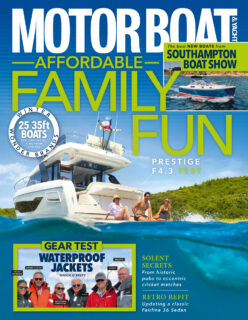


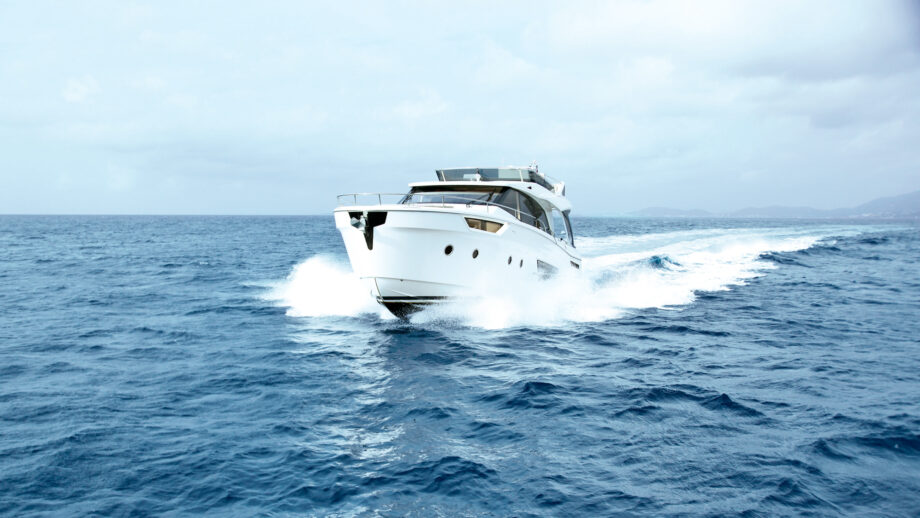
 If you enjoyed this….
If you enjoyed this….
